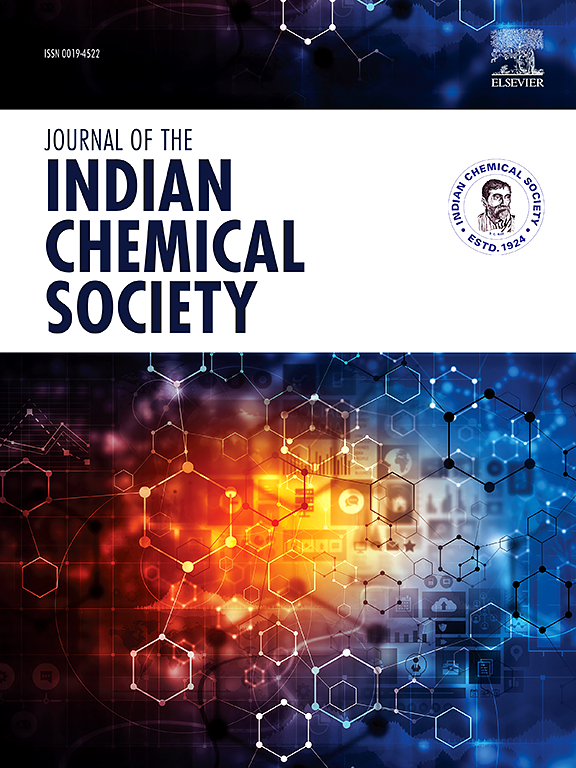Synthesis and characterization of new Schiff base/Amine-functionalized polysiloxane: An efficient sorbent for the removal of Cr(VI)
IF 3.2
4区 化学
Q2 CHEMISTRY, MULTIDISCIPLINARY
引用次数: 0
Abstract
Traditional Schiff base reactions are used in many domains, such as adsorbent synthesis, metal chelation, liquid crystals, dyes, and catalysis. Given its numerous potential uses, we prepared a Schiff base combining amino antipyrine and vanillin and discussed its crystal structure. Then, using an economical one-pot sol-gel approach, the created Schiff base co-operated into a polysiloxane framework. The constituent AAV-Sc-m underwent extensive scrutiny, adopting all required characterization techniques and revealed the 98.9% Cr(VI) removal from the water-based media. Optimization of the initial ppm of the Cr(VI) solution, the amount of AAV-Sc-m, pH, and reaction time permitted the well-establishment of the Cr(VI) removal using AAV-Sc-m. To gain insight into the steps in the mechanism, experimental data from studies with varying initial Cr(VI) concentrations are used to fit the Langmuir, Freundlich, and Temkin models. The Langmuir model best suits the experimental results, with an R2 of 0.99, revealing the single-layer chemisorption operation. The time study data was also fitted to the PFO, intra-particle diffusion and PSO models; the PSO model emerged as the finest fit. A thermal assessment indicates that the Cr(VI) elimination process is endothermic and spontaneous. Regarding the industrial approach, AAV-Sc-m is reasonable and suitable for continuous adsorption-desorption cycles based on the recycling study.

新型席夫碱/胺功能化聚硅氧烷的合成与表征:一种高效去除Cr(VI)的吸附剂
传统的希夫碱反应被用于许多领域,如吸附剂合成、金属螯合、液晶、染料和催化。鉴于它的许多潜在用途,我们制备了一种由氨基安替比林和香兰素组成的希夫碱,并讨论了它的晶体结构。然后,使用经济的一锅溶胶-凝胶方法,创建的希夫碱合作成聚硅氧烷框架。对AAV-Sc-m组分进行了广泛的审查,采用了所有必要的表征技术,结果显示,该组分从水基介质中去除了98.9%的Cr(VI)。通过优化初始浓度、AAV-Sc-m用量、pH值和反应时间,确定了AAV-Sc-m对Cr(VI)的去除效果。为了深入了解机制的步骤,使用不同初始Cr(VI)浓度研究的实验数据来拟合Langmuir, Freundlich和Temkin模型。Langmuir模型最符合实验结果,R2为0.99,揭示了单层化学吸附操作。时间研究数据也拟合到PFO、粒子内扩散和PSO模型;粒子群模型是最合适的。热评价表明,Cr(VI)的消除过程是吸热自发的。在工业方法上,通过对AAV-Sc-m的回收研究,认为AAV-Sc-m是合理的,适合连续的吸附-解吸循环。
本文章由计算机程序翻译,如有差异,请以英文原文为准。
求助全文
约1分钟内获得全文
求助全文
来源期刊
CiteScore
3.50
自引率
7.70%
发文量
492
审稿时长
3-8 weeks
期刊介绍:
The Journal of the Indian Chemical Society publishes original, fundamental, theorical, experimental research work of highest quality in all areas of chemistry, biochemistry, medicinal chemistry, electrochemistry, agrochemistry, chemical engineering and technology, food chemistry, environmental chemistry, etc.

 求助内容:
求助内容: 应助结果提醒方式:
应助结果提醒方式:


